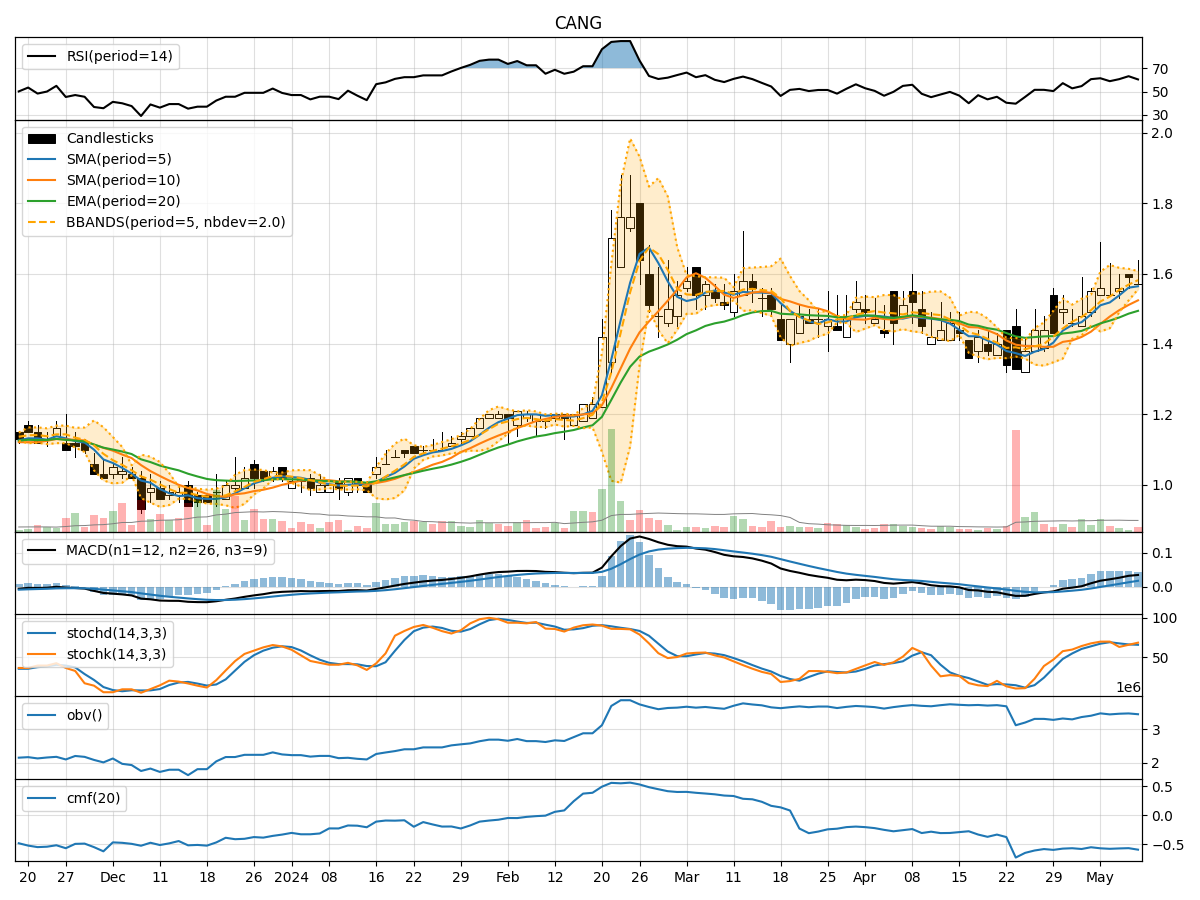
Technical Analysis of CANG 2024-05-10
Overview:
In analyzing the technical indicators for CANG over the last 5 days, we will delve into the trend, momentum, volatility, and volume indicators to provide a comprehensive outlook on the possible stock price movement in the coming days.
Trend Analysis:
- Moving Averages (MA): The 5-day Moving Average (MA) has been consistently above the Simple Moving Average (SMA) and Exponential Moving Average (EMA), indicating a bullish trend.
- MACD: The MACD line has been consistently above the signal line, with both lines showing an upward trend, suggesting bullish momentum.
Momentum Analysis:
- RSI: The Relative Strength Index (RSI) has been fluctuating around the 60-65 range, indicating a neutral momentum.
- Stochastic Oscillator: Both %K and %D lines of the Stochastic Oscillator have been in the overbought zone, suggesting a potential reversal or consolidation.
Volatility Analysis:
- Bollinger Bands (BB): The stock price has been trading within the Bollinger Bands, with the bands narrowing, indicating decreasing volatility.
Volume Analysis:
- On-Balance Volume (OBV): The OBV has been relatively stable, indicating a balance between buying and selling pressure.
- Chaikin Money Flow (CMF): The CMF has been negative, suggesting a bearish money flow.
Key Observations:
- The trend indicators suggest a bullish sentiment, supported by the moving averages and MACD.
- Momentum indicators show a neutral stance, with the RSI hovering around the midpoint and Stochastic Oscillator in the overbought zone.
- Volatility has been decreasing, as indicated by the narrowing Bollinger Bands.
- Volume indicators reflect a balanced OBV but a bearish CMF, indicating a potential lack of strong buying pressure.
Conclusion:
Based on the analysis of the technical indicators, the next few days for CANG stock price movement could see sideways consolidation with a slight upward bias. The bullish trend indicated by moving averages and MACD may be hindered by the neutral momentum and bearish money flow. The decreasing volatility suggests a potential period of consolidation, while the balanced OBV indicates a lack of significant buying pressure. Traders should monitor for a potential reversal if the Stochastic Oscillator moves out of the overbought zone.